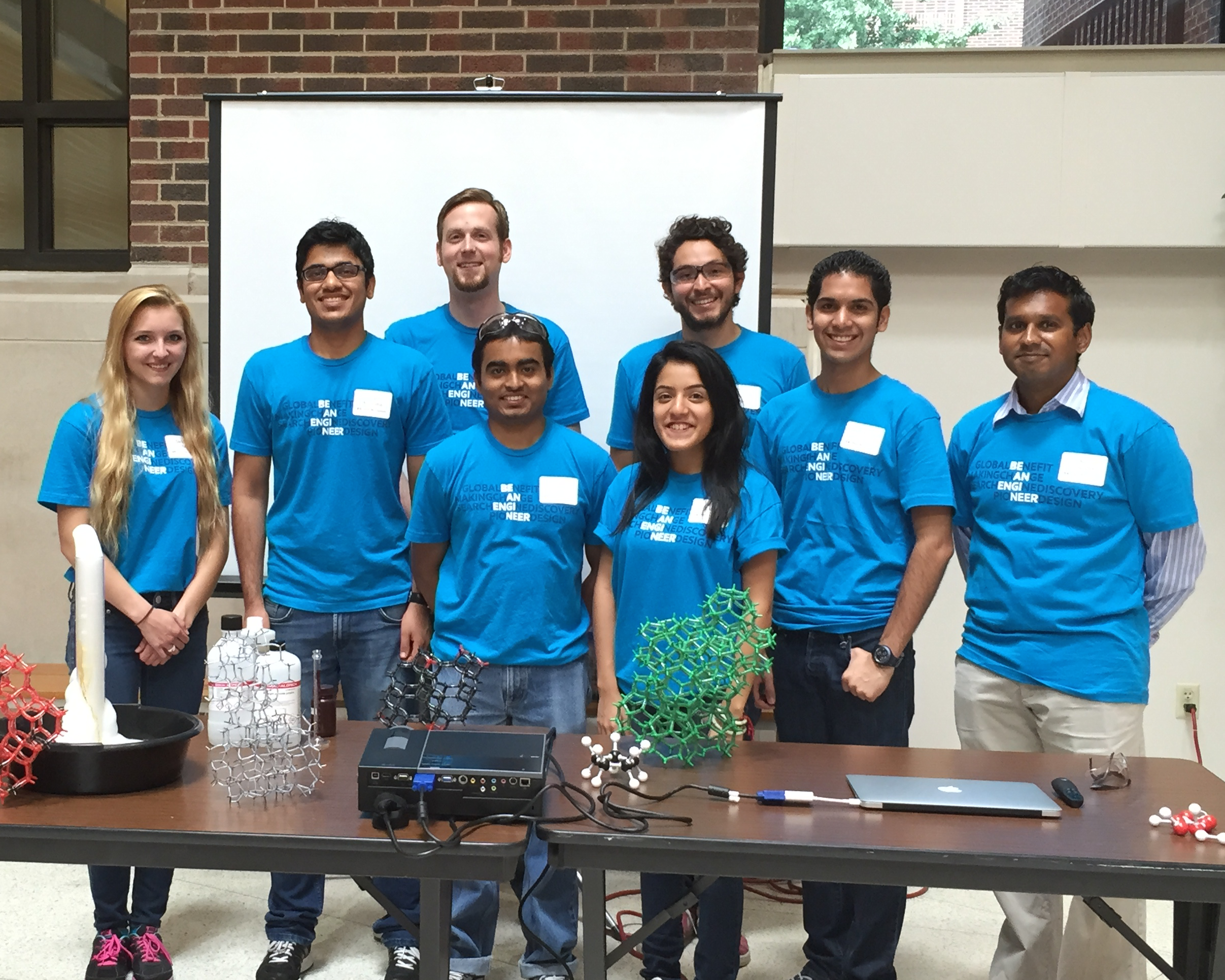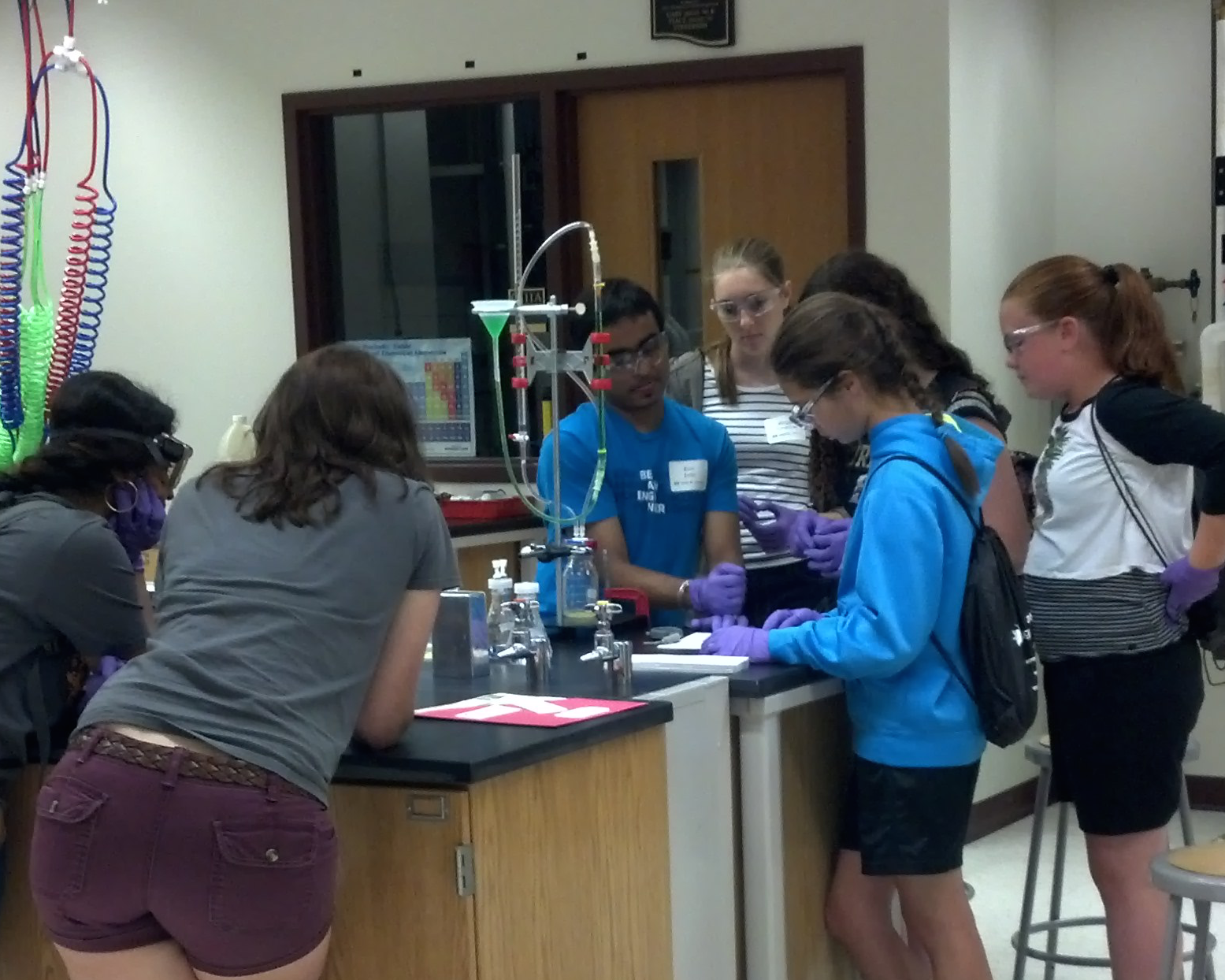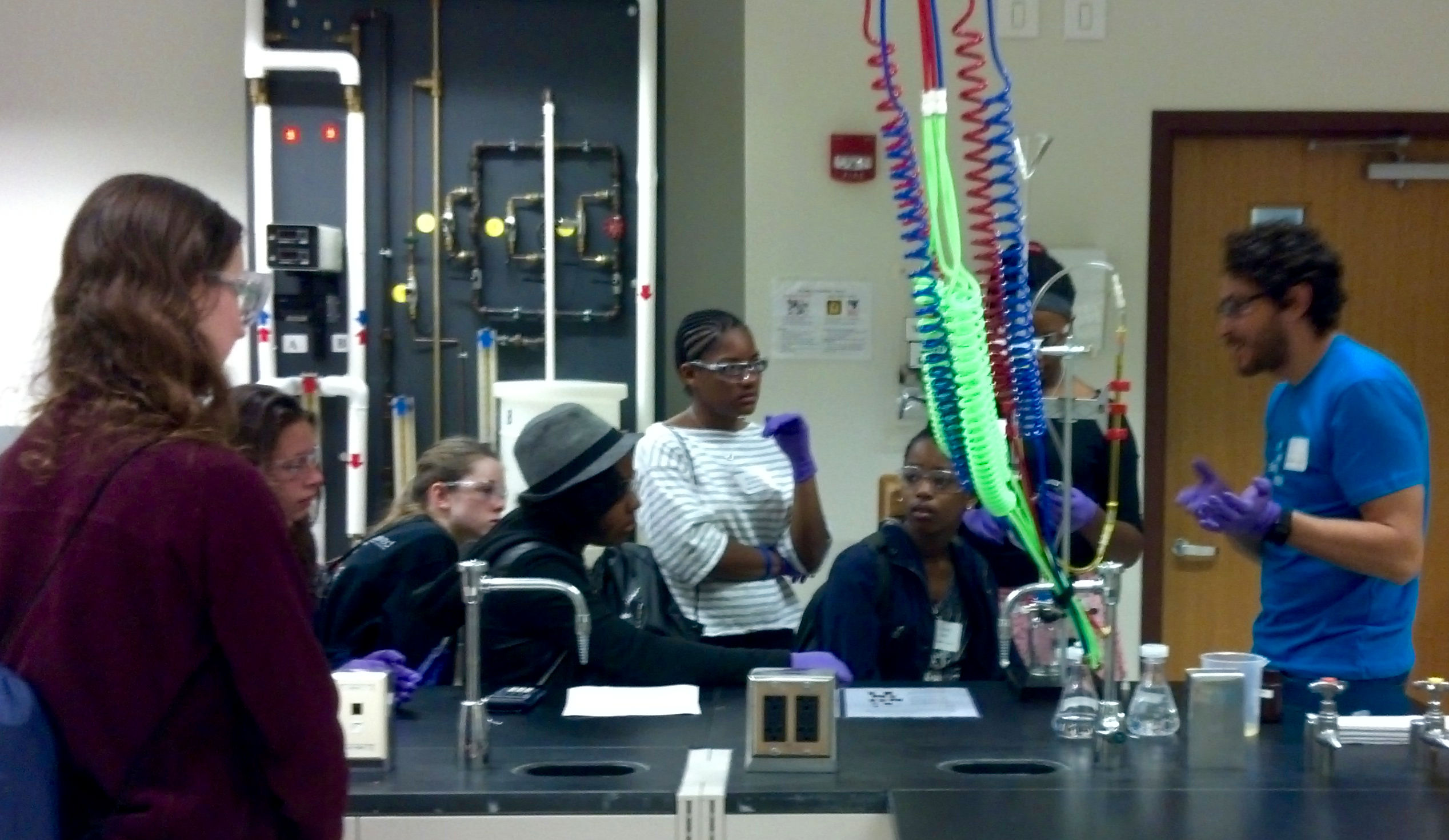Outreach Activities
CISTAR Virtual Outreach for Middle School Students (Spring 2020)
We partnered with CISTAR to develop virtual outreach events for middle school students unable to participate in science activities in the classroom because of the COVID-19 pandemic. Each outreach event involved 30-60 students in a series of three, one-hour sessions held via a teleconferencing platform. These virtual sessions provided an opportunity for middle school students at schools across the United States to engage with engineering graduate students and learn about the important role of catalysts in light hydrocarbon upgrading. Students had the opportunity to perform a guided, hands-on, catalysis-related demonstration in real-time in their own homes and to practice making and sharing scientific observations. We are working to expand this program in the fall even with the return of in-person classes at the behest of middle school educators who partner with CISTAR. These virtual events provide us the opportunity to broaden our impact to engage middle school students and to support middle-school educators across the United States.


CISTAR-Chevron Outreach
In November 2019, students from Cristo Rey High School in Columbus, Ohio visited campus for tours, class visits and information sessions. Cristo Rey targets under-served youth in central Ohio, more than 90% of the students are underrepresented minorities. While the students were at Purdue they met with the Minority Engineering Program and the Office of Future Engineers and attended an EPICS Design Review. The highlight of the two days was a visit to the School of Chemical Engineering to learn more about CISTAR. The students were accompanied by their teacher, Kyle Scheumaker, who spent summer 2019 with CISTAR as a participant in the Research Experience for Teachers (RET) program. Elizabeth Bickel and Arunima Saxena, graduate students in Professor Gounder’s lab, led an information session and tour of the Gounder lab. Two of the Cristo Rey students have been admitted to Purdue Engineering for Fall 2020. Support for this trip was made possible by Chevron.


CISTAR Middle School Curriculum and Outreach
In 2019, eleven in-service teachers were recruited to participate in a six-week summer Research Experience for Teachers (RET) with CISTAR. The science, math and engineering teachers were given the opportunity to engage in hands-on projects with Purdue researchers and to create content for their classrooms. Arunima Saxena from Professor Gounder’s lab mentored Marie Mikels, middle school teacher at Tecumseh Junior High School, who created a lesson “CISTAR Hydrocarbon Oligomerization.”
In January 2020, Marie implemented the lesson in her 7th grade classroom. The lesson will soon be shared broadly to other science teachers via the CISTAR website. A modified version is being used for an outreach activity at all five CISTAR universities.


CISTAR Young Scholars Outreach
In 2018 and 2019, the CISTAR Young Scholars program brought high school students to campus to work on projects with CISTAR graduate and undergraduate researchers. Each summer the students led out reach sessions for children in the local community at the Imagination Station science museum in Lafayette, IN.


Murdock Elementary School
In collaboration with the Graduate Student Organisation, members of Purdue Catalysis Center are involved in organising after-school science club for third graders at Murdock Elementary School in Lafayette, Indiana. During each one-hour session, usually organized every Monday, the chemical engineering graduate students teach third graders concepts in science and engineering ranging from geology and dinosaurs to engineering design, electricity, and magnetism. The goal is to demonstrate to the young learners that science is fun and a great career option for them to consider. In addition to the prepared lessons, graduate students also serve as mentors.
Chemical Engineering graduate student involvement at the Murdock Elementary after-school science program began in 2013, and the continued outreach underscores its success. Graduate volunteers attest that the Murdock program has increased participant retention of the covered topics while developing a greater excitement for science.


Duke Energy Academy
PCC members led research projects and hands on activities related to catalysis and energy for a group of high school students and teachers from Indiana and Ohio as part of the 2017 Duke Energy Academy.
The theme of the project was Catalysis for Energy Innovation. The project featured a presentation, demonstrations, and hands-on activities to introduce the students to the theory and practice of catalysis. Presentations covered how modern supercomputers allow researchers to study the atomic-level behavior of catalysts, demonstrations of how catalysts work and how catalytic reactions are critical to fuel cell technology.
A group of 11 high school students and 4 high school teachers worked with a transmission electron microscope (TEM) at Purdue’s Birck Nanotechnology Center to see how this powerful instrument allows imaging individual atoms on the surface of a catalyst. The students also utilized their research skills by assembling and testing an ethanol fuel cell. By experimenting with solutions containing different amounts of fuel and water or with fuel solutions of different temperature, the students observed how fuel concentration and temperature affect the power output from the fuel cell, which is an important concept in both chemical kinetics and electrocatalysis.
Participants learned about how to design catalyst surfaces to promote reactions, using hydrogen peroxide synthesis from hydrogen and oxygen as an example of “green” chemistry. Students and teachers were able to use ball-and-stick models of different atoms and surface facets of a platinum catalyst, together with theory calculations, to observe how specific locations (binding sites) on the catalyst surface are important to performing a reaction and how theoretical models can help guide the discovery of new catalytic materials.



Purdue Catalysis Center Hosts Outreach Event for Over 32 Local 6th to 8th Grade Students
In collaboration with Purdue’s Women in Engineering Program, the Purdue Catalysis Center (PCC) hosted 32 local 6th to 8th grade students on October 20th and November 3rd for the fall 2015 Innovation to Reality (I2R) program with the theme "Energized Engineering for the Environment".
Participants learned about how catalysts are used in environmentally friendly processes, such as the conversion of chemical energy to electrical energy in an ethanol fuel cell as well as the epoxidation of propylene with hydrogen peroxide, which is an environmentally-benign ("green") oxidant. The students also participated in hands-on laboratory activities with model ethanol fuel cells and measured rates of hydrogen peroxide decomposition in the Fundamentals Laboratory in the Forney Hall of Chemical Engineering. Additionally, student participants toured the PCC research laboratories where they learned about the instruments used to study catalytic reactions and about how catalysts are used to treat diesel engine exhaust with the aid of a cut-out display of an actual catalytic converter, provided courtesy of Johnson-Matthey.
The event was led by PCC graduate students Viktor Cybulskis and Phil Kester along with Prof. Rajamani Gounder. PCC graduate students Jason Bates, Jonatan Albarracin, Michael Cordon, Ravi Joshi, Ishant Khurana, Arthur Shih, Juan Carlos Vega-Vila, and Rob Warburton facilitated the hands-on activities and lab tours.


Purdue Catalysis Center hosts outreach event for over 100 junior high students
The latest Purdue Catalysis Center (PCC) outreach activity, in partnership with the Purdue Women In Engineering Program, took place on Saturday, July 11, 2015 in the Forney Hall Fundamentals Laboratory and Henson Atrium. The event, Engineering FYI: For Your Imagination, provided a day-long program of activities to more than 100 junior high students and their parents, designed to increase interest in engineering among rising 7-9th grade students. PCC members provided an engaging day of activities that showed how catalysis is important to medicine, energy, the environment, and everyday life.
In the Henson Atrium, the students observed a presentation describing the basics of catalysis and several chemistry and catalysis demonstrations, and performed hands-on experiments with ethanol and hydrogen fuel cells that illustrated concepts in renewable energy sources. In the Fundamentals Laboratory in Forney Hall, the students measured hydrogen peroxide decomposition rates with a liquid sodium iodide catalyst, and learned how reactant concentration influenced the reaction rate, which is a basic concept in catalysis. The decomposition of hydrogen peroxide is a reaction that also is catalyzed by enzymes (biological catalysts) to breakdown harmful metabolic byproducts in humans and living organisms.
Graduate student Viktor Cybulskis, who is co-advised by Professors Fabio H. Ribeiro and W. Nicholas Delgass, and assistant professor Raj Gounder developed and led the outreach event on behalf of the PCC. PCC graduate student researchers Jonatan Albarracin, Ravi Joshi, Ishant Khurana, Juan Carlos Vega-Vila; undergraduate researcher Jacklyn Hall; and visiting high school researcher Anahi Rostro supervised the hands-on activities and demonstrations.
Photos from the Engineering FYI Outreach Event



